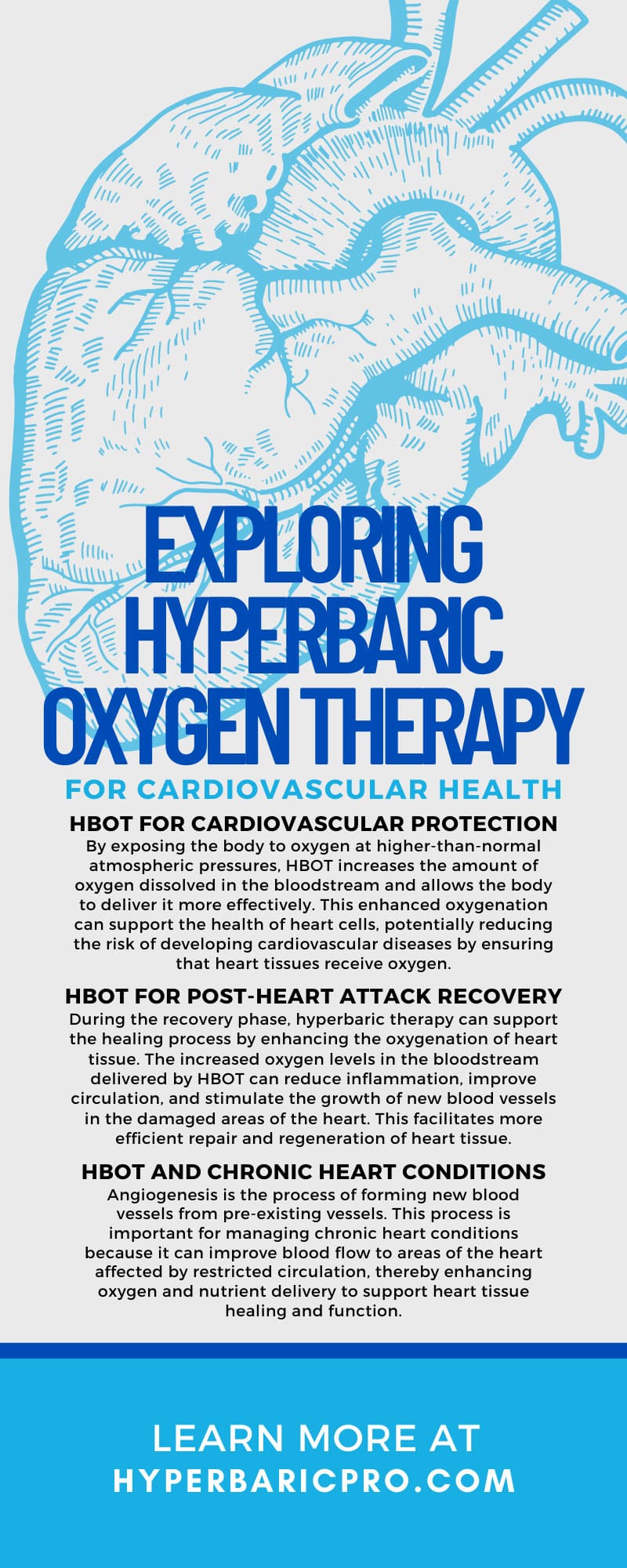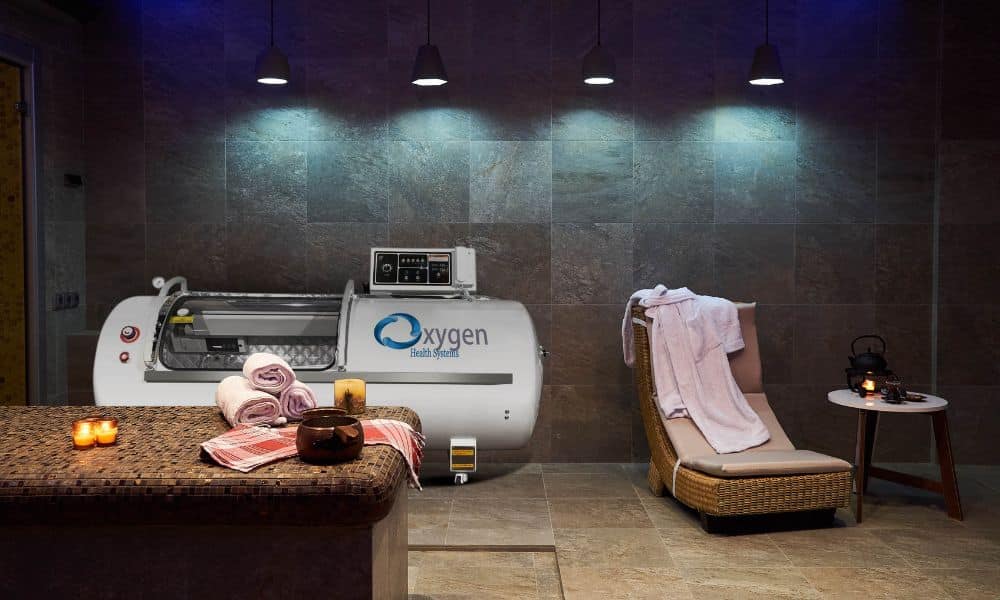Life Style
Exploring Hyperbaric Oxygen Therapy for Cardiovascular Health
Heart health influences virtually every function within the human body. A healthy heart ensures efficient circulation, delivering oxygen and nutrients to tissues while removing waste.
Hyperbaric oxygen therapy (HBOT) stands out not only as a treatment for existing cardiac conditions but also as a preventive measure against cardiovascular diseases. Its ability to enhance oxygen delivery and improve blood circulation makes it valuable both for healing damaged heart tissue and for maintaining overall cardiovascular health. Explore hyperbaric oxygen therapy for cardiovascular health and consult with a health-care provider to see how this therapy can benefit you.
Understanding Hyperbaric Oxygen Therapy
HBOT operates on a simple premise: placing a patient with heightened levels of oxygen in a pressurized chamber. This method increases the amount of oxygen dissolved in the bloodstream and transported to various tissues and organs. This oxygen maintains the health and function of all bodily tissues, supports metabolism, and aids in the removal of carbon dioxide, a waste product of metabolic processes.
Rooted in treating divers and miners, HBOT has evolved to support various medical conditions, such as severe infections and non-healing wounds. Oxygen plays a crucial role in cellular function and recovery, a factor that underlies the therapy’s principles. Hyperbaric oxygen therapy may be an effective treatment modality for addressing cardiovascular concerns by enhancing oxygen delivery to heart tissues.
The Cardiovascular System and Oxygen
The heart demands a constant supply of oxygen to fulfill its vital task of circulating blood throughout the body. Oxygen is the fuel that allows cardiac cells to produce the necessary energy for this relentless activity.
However, restricted blood flow and under-oxygenation, known as hypoxia, can lead to cardiac distress and diseases. Angina is a condition characterized by chest pain or discomfort resulting from reduced blood flow to the heart muscle, indicating that the heart isn’t receiving enough oxygen-rich blood. Heart attacks occur when something blocks the blood flow to a part of the heart for a long enough time that part of the heart muscle dies.
HBOT for Cardiovascular Protection
People who want to enhance their overall cardiovascular health can explore hyperbaric oxygen therapy to improve the efficiency of oxygen delivery to the heart and other vital organs. By exposing the body to oxygen at higher-than-normal atmospheric pressures, HBOT increases the amount of oxygen dissolved in the bloodstream and allows the body to deliver it more effectively. This enhanced oxygenation can support the health of heart cells, potentially reducing the risk of developing cardiovascular diseases by ensuring that heart tissues receive oxygen.
In addition to directly benefiting heart tissue, the increased oxygen levels in the blood from HBOT can reduce inflammation and improve blood vessel function. Improved blood vessel function leads to better circulation, which further supports the heart’s ability to pump blood efficiently. Consider regular sessions of HBOT as part of a comprehensive, preventive approach to health and wellness.
HBOT for Post-Heart Attack Recovery
A heart attack occurs when something blocks the flow of oxygen-rich blood to a section of the heart muscle, often by a clot in the coronary arteries. This blockage, if not quickly resolved, causes the affected heart tissue to become damaged or die due to the lack of oxygen. Common causes include the buildup of plaque in the arteries (atherosclerosis), blood clots, and, less frequently, the spasm of a coronary artery, all of which can severely restrict or stop blood flow to the heart.
The components of comprehensive heart attack recovery typically include:
- Use of medications like antiplatelets, statins, beta-blockers, and ACE inhibitors to improve heart function and prevent future attacks.
- A personalized exercise and education program designed to improve cardiovascular health and aid in recovery.
- Lifestyle changes, including dietary modifications, smoking cessation, and stress management, to reduce risk factors.
- Regular check-ups with health-care providers to monitor heart health and adjust treatments as necessary.
- Counseling or therapy to address emotional and mental health challenges post-heart attack.
- Learning about heart disease, its management, and ways to live a heart-healthy lifestyle.
During the recovery phase, hyperbaric therapy can support the healing process by enhancing the oxygenation of heart tissue. The increased oxygen levels in the bloodstream delivered by HBOT can reduce inflammation, improve circulation, and stimulate the growth of new blood vessels in the damaged areas of the heart. This facilitates more efficient repair and regeneration of heart tissue.
HBOT and Chronic Heart Conditions
Chronic heart conditions, such as heart failure and peripheral artery disease, often result from longstanding issues with the cardiovascular system that range from genetic predispositions to lifestyle factors. These conditions can severely affect a patient’s quality of life and require ongoing management.
HBOT promotes angiogenesis, a crucial mechanism in the body’s response to insufficient blood supply to tissues. Angiogenesis is the process of forming new blood vessels from pre-existing vessels. This process is important for managing chronic heart conditions because it can improve blood flow to areas of the heart affected by restricted circulation, thereby enhancing oxygen and nutrient delivery to support heart tissue healing and function.
HBOT and Traditional Cardiovascular Treatments
Traditional cardiovascular treatments largely focus on medication, lifestyle modifications, and, in some cases, surgical interventions. These remain the mainstay of cardiovascular care, but HBOT can play a supportive role by enhancing tissue healing and reducing inflammation.
Some professionals advocate for using HBOT as an adjunct therapy, appreciating its benefits in conjunction with traditional approaches. Integrating HBOT can potentially accelerate recovery and improve outcomes for patients undergoing conventional cardiovascular treatments. Patients exploring this option must adhere to professional guidelines and should always use HBOT alongside conventional treatments under medical supervision.
Enhance Cardio Health With HBOT
Hyperbaric oxygen therapy presents a compelling adjunctive treatment for enhancing cardiovascular health by improving oxygen delivery and circulation. By directly increasing the oxygen concentration in the blood, HBOT facilitates better oxygenation of heart tissues and promotes angiogenesis, which can be beneficial in the management of chronic heart conditions and recovery post-heart attack. Integrating HBOT with traditional cardiovascular treatments offers a holistic approach, aiming to accelerate healing processes and improve patient outcomes.
Regular HBOT sessions could serve as a preventive measure, particularly for individuals at risk of cardiovascular diseases. This preventive approach focuses on optimizing heart and vascular health before any significant problems arise, potentially reducing the occurrence of heart-related incidents.
Hyperbaric Pro offers 1.5 ATA hyperbaric chambers for sale to practitioners and home users. Designed with the latest technology, these chambers enhance safety, comfort, and ease of use. Choose our products as a reliable way to incorporate hyperbaric oxygen therapy into a cardiovascular health regimen.


